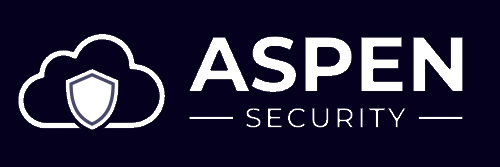Imagine buying a brand-new car packed with all the latest features: speed camera detection, heated seats, and armrests. You’re eager to take it for a spin. But when you try to start it, nothing happens. Suddenly, all those exciting features seem pointless because the car itself doesn’t function. Ideally, you want a vehicle that not only comes with the bells and whistles but also works reliably every time you need it.
The same principle applies to cloud security solutions.
The Cost of Downtime in Cloud Security
Over the past several weeks, the importance of uptime and performance for cloud security solutions has become increasingly evident. At my company, we’ve received numerous calls from customers of other SASE (Secure Access Service Edge) vendors struggling with outages in their current security solutions.
Consider this: one competitor’s product experienced a 14-hour outage, while another suffered six outages in just 15 days. These events don’t just increase an organization’s exposure to security risks — they disrupt operations and can even halt business continuity altogether.
Such service outages often stem from the underlying infrastructure on which a vendor’s products are built. Many SASE providers opt to create and maintain private data center networks for their solutions. While this approach might seem logical, it often fails to match the reliability of public cloud providers, which have dedicated their entire business models to achieving unparalleled service delivery.
A Different Approach to Uptime
As organizations observe these outages, a common question arises: How has one company maintained an industry-leading uptime of 99.99% since 2014?
The answer lies in its architecture. Unlike competitors relying on private data centers, this company’s platform is built in — and delivered through — the public cloud. This decision allows the company to focus entirely on innovating its security technologies, leaving the heavy lifting of infrastructure management to public cloud providers, which are designed for scalability and reliability.
The public cloud offers virtually infinite redundancy, storage, and compute power. Attempting to replicate this infrastructure independently often results in failure. True cloud security must be delivered from the cloud itself.
Polyscale Architecture: A Game-Changer
Cloud security services come in many forms, offering varying functionality. Some operate inline for real-time security, while others work out-of-band for visibility and control. Regardless of their purpose, the most critical criterion for choosing a cloud security service is uptime and performance.
Legacy Security Architecture: A Mismatch
Many legacy security products were designed for single-tenant usage with fixed throughput capacities, such as a 1GB/sec firewall or a secure web gateway proxy. These devices, when offered as cloud services, are deployed in data centers with pricing tied to fixed throughput. While this model works for traditional network security services, it fails when applied to user-based services like email security, data loss prevention (DLP), or cloud access security brokers (CASB).
For example:
- A customer with 10,000 users expects consistent performance and uptime, regardless of location or usage spikes.
- If half the users temporarily migrate to a remote location for an offsite meeting, this could overload a data center with fixed capacity, causing performance degradation for all users and potentially all other customers.
Polyscale Architecture: The Solution
In contrast, a polyscale architecture ensures each component of the cloud security service is stateless, multi-tenant, and capable of handling multiple applications and protocols simultaneously. When load increases — say, exceeding 50% over five minutes — the system automatically scales by cloning the necessary components.
For example:
- When a large customer’s offsite event increases demand at a specific location, the remote data center dynamically adjusts its capacity to match the load, maintaining seamless performance and uptime.
This approach ensures scalability, resilience, and an optimal user experience, even during unexpected spikes in demand.
The Future of Cloud Security
Legacy network architectures struggle to deliver the performance and uptime needed in today’s fast-paced, cloud-driven world. As organizations continue to adopt cloud services for critical operations, it’s clear that the future of security lies in solutions designed with the public cloud and polyscale architecture in mind.
When evaluating cloud security services, organizations must prioritize uptime and performance. The ability to innovate, scale, and remain resilient during peak loads isn’t just a nice-to-have — it’s a necessity for ensuring business continuity and security in the digital age.
If your organization is facing challenges with cloud security or uptime, it might be time to rethink your approach. Remember, true cloud security doesn’t reinvent the cloud — it embraces its full potential.
Let’s secure the future — together.
Need Help Managing Cloud Security?
At Aspen Security, our experts specialize in cloud security threat detection, prioritization, and remediation management. If you’re looking to strengthen your cloud security strategy or need help implementing CNAPP, CSPM, or CWPP, we’re here to assist.
Reach out to a cloud security expert today at info@aspensecurity.io and let us help you protect what matters most.


